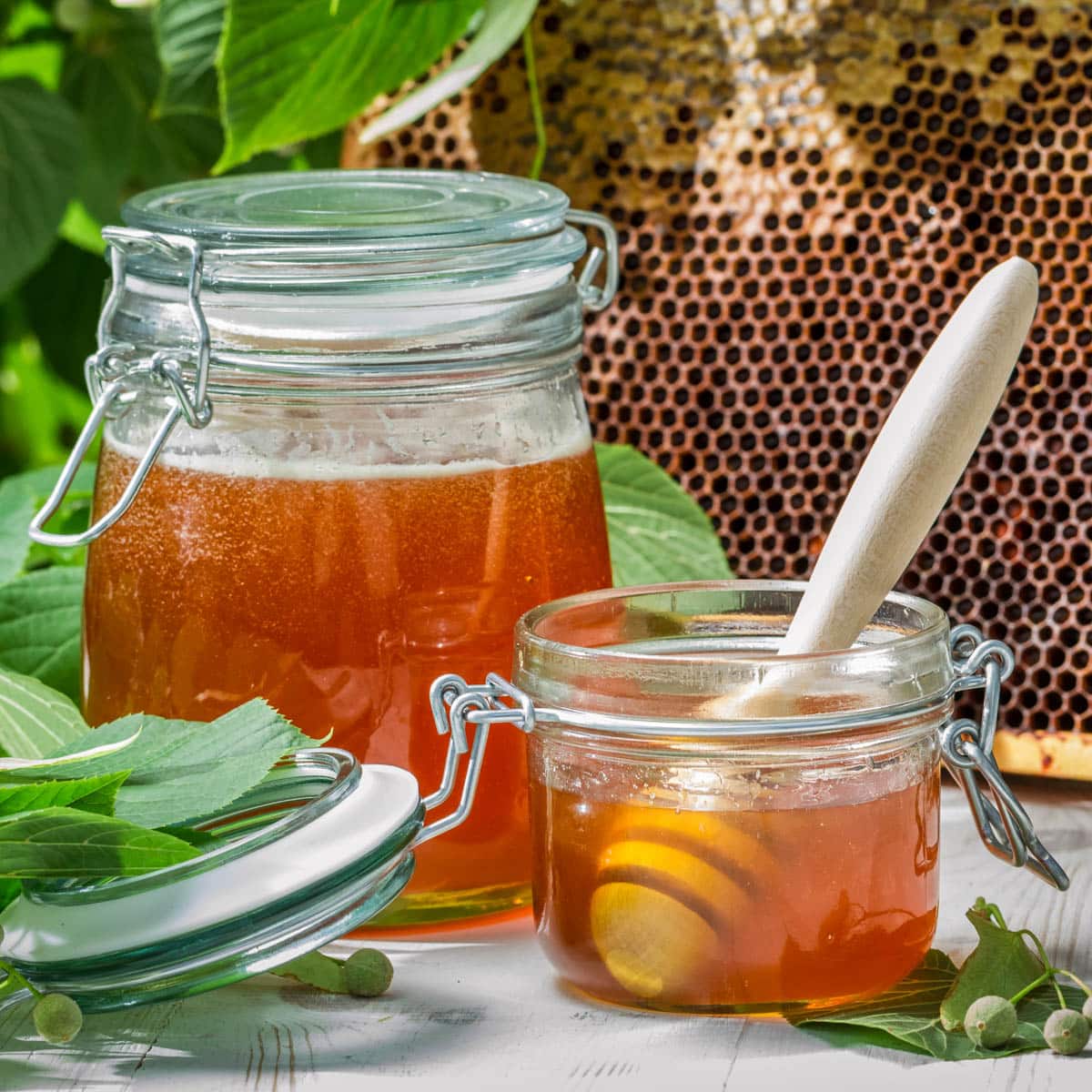How To Store Honey
Honey, that golden elixir created by bees, is not only a natural sweetener but also a versatile ingredient with numerous health benefits.
Properly storing honey is essential to maintain its quality, taste, and texture over time. In this comprehensive guide, we’ll explore the best practices for storing different types of honey, how to store honey after opening, its shelf life, how to determine if honey has gone bad, and answer some frequently asked questions.
How to store honey
To store honey properly, keep it in a cool, dry place, away from direct sunlight and moisture. Use a tightly sealed container to prevent air exposure and maintain its freshness. Avoid extreme temperature changes.

When it comes to storing different types of honey, understanding their unique characteristics and storage requirements is essential.
From raw honey to creamed honey and pasteurized honey, each variety has its own nuances that can impact its longevity and quality.
Let’s explore the best practices for storing these distinct types of honey to ensure their freshness and preserve their natural goodness.
Raw honey
Raw honey is unfiltered and unprocessed, maintaining its natural enzymes, antioxidants, and pollen content.
It should be stored in a cool, dry place, away from direct sunlight and heat sources. Opt for airtight glass jars to preserve their freshness and prevent moisture absorption.
Creamed honey
Creamed honey has a smooth, spreadable consistency. It’s best stored at room temperature, between 50°F and 70°F (10°C and 21°C).
Keep it in airtight containers to prevent moisture absorption and maintain its creamy texture.
Pasteurized honey
Pasteurized honey has undergone a heating process to remove impurities and improve its shelf life. It can be stored similarly to raw honey, in a cool, dry place away from direct sunlight.
| Type of Honey | Storage Guidelines |
|---|---|
| Raw Honey | Store in cool, dry place away from sunlight |
| Creamed Honey | Store at room temperature, avoid moisture |
| Pasteurized Honey | Store in cool, dry place away from direct sunlight |
Learn more about properly storing foods to ensure freshness and food safety. Check out a few of my posts about how to store apples, how to store sugar long-term, or how to store flour.
How to store honey after opening
After opening a jar of honey, it’s crucial to continue protecting its quality by minimizing exposure to air and moisture.
Properly reseal the container after each use and consider transferring the honey to smaller containers to reduce air contact.
By storing it in a cool, dry place away from temperature fluctuations, you can extend the shelf life and enjoy the rich, sweet taste of honey for an extended period.
Best storage containers for honey
When it comes to storing honey, it’s important to use the right containers to keep it fresh and tasty.
The ideal storage containers for honey are usually made of glass or safe plastics that won’t harm the honey or affect its flavor.
Look for containers with tight-fitting lids or seals to keep air and moisture out. This helps preserve the honey’s natural goodness and prevents it from becoming runny or losing its sweet taste.
Clear glass jars are a good choice because you can see the honey’s color and check its quality easily. It’s also a good idea to choose containers that are easy to clean, so you can reuse them for storing honey or other foods in the future.
By using the right storage containers, you can enjoy the deliciousness of your honey for a long time to come.
How long does honey last
Honey has an incredibly long shelf life due to its low moisture content and natural preservatives. When stored properly, honey can last indefinitely.
Over time, however, its flavor, color, and texture may change. While honey doesn’t necessarily spoil, it’s best to consume it within two years for optimal quality.
Although honey can last a very long time if stored properly it is important to know how to tell if honey has gone bad so that you can discard it if need be.
Factors such as storage conditions, moisture exposure, and temperature fluctuations can impact the longevity of honey, so it’s important to store it in a cool, dry place and protect it from moisture and air exposure to maintain its freshness for as long as possible.
Determining honey quality
To assess honey’s quality, use your senses:
- Appearance: Look for any signs of discoloration, mold growth, or crystallization.
- Smell: Honey should have a pleasant aroma. If it smells sour, fermented, or off, it may have gone bad.
- Taste: Taste a small amount of honey. Spoiled honey may have a funky or unpleasant taste.
By following your judgment and trusting your senses you will be able to easily access the quality of your honey and be able to know if you should discard it or not.
Frequently asked questions for how to store honey
Conclusion
Proper storage of honey is crucial to preserve its natural sweetness, flavor, and beneficial properties.
By following the guidelines for storing different types of honey, protecting it from moisture and air exposure, and storing it in suitable conditions, you can ensure the longevity and quality of this remarkable gift from nature.
Whether you use honey as a sweetener, natural remedy, or culinary ingredient, it’s vibrant taste and golden essence will continue to enhance your life’s sweet moments. Store your honey with care and indulge in its pure, natural goodness.

Online Cooking for Beginners Course